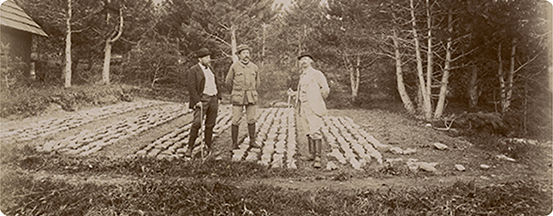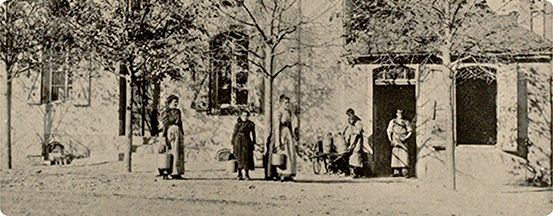Reforestation at altitude: from species selection to “flying nurseries”
Starting from 1860, but especially after 1882, reforesting entire areas of the Alps or Pyrenees becomes a national policy, implemented by the mountain land restoration services (RTM). The goal is to reforest in order to stabilize the land and silence the torrents. Reforestation involves selecting species suited to the altitudes and conditions of the mountains. It also requires organizing production in "flying nurseries" or in valleys for the most suitable tree species.

Choice of suitable areas
The choice of areas for reforestation must ensure proper tree establishment in order to guarantee their growth and subsequent natural reproduction.
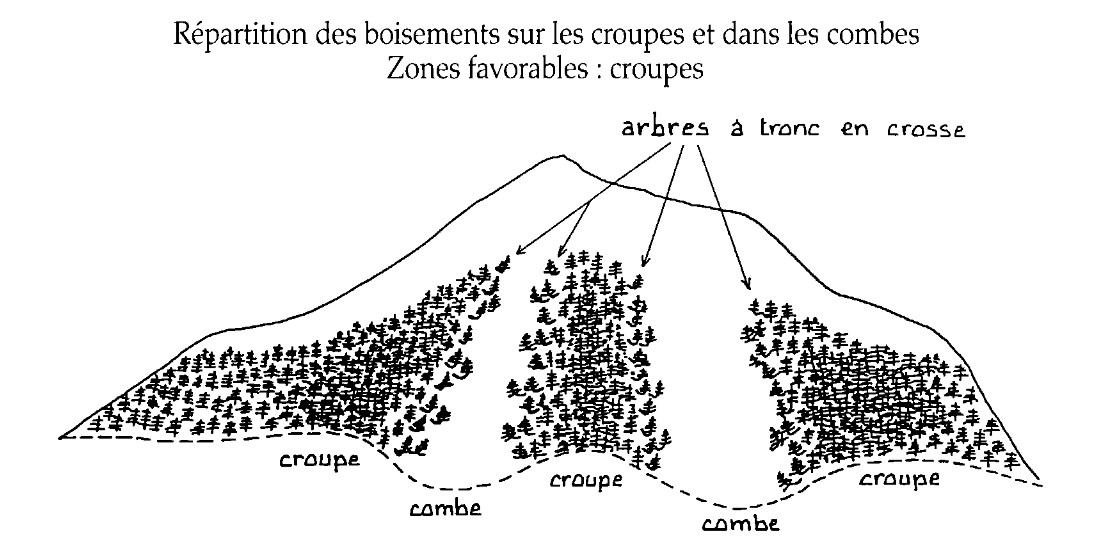
The altitude limit for planting (treeline) depends on both the continentality and the latitude of the sites. Altitude naturally plays a role in temperature. Barometric pressure decreases with altitude, resulting in a change in the concentration of oxygen, carbon dioxide and water vapour. Solar radiation (irradiation) is more intense, as are thermal fluctuations. The orientation of slopes also plays a significant role in the ability of trees to colonise the land.
Ridges, rounded, elongated reliefs with no steep slopes, are the first sites targeted for reforestation due to their favourable characteristics: high radiation, extended growing season and earlier onset of photosynthesis during the day.
Valleys are often avalanche chutes, prone to rock falls and subject to torrential erosion. The duration of sunlight exposure is shorter and temperatures are lower.
Choice of species according to altitude
Very few species are available for reforestation at (high) altitude. Local species are favoured to facilitate the survival of plantings.
“It is only when the land has been firmed up and the torrent brought under control that the actual reforestation can begin. For this purpose, nurseries containing the species best suited to the soil and climate had to be established close to the work sites. In the highest parts, Swiss stone pine and larch are the most successful; in the intermediate region, Austrian black pine is suitable for limestone soils, and Scots pine for the rest; finally, in the lower zone, preference should be given to deciduous species such as oak and elm. On the arid slopes of the coastal mountains, Aleppo pine and maritime pine are used, as they can withstand the prolonged droughts of the Mediterranean region. Various species of shrubs and bushes are also often used, their creeping roots being marvellously suited to fixing the soil, and their fast-growing vegetation able to give initial shelter to bare ground.” J. Clavé, le reboisement des Alpes, février 1881, revue des deux mondes.
The Swiss stone pine (also known as the Arolla pine) grows at altitudes of between 1,400 and 2,500 meters. It is particularly well-suited to high altitudes with their low temperatures, high radiation, and strong winds. Its growing season is short.
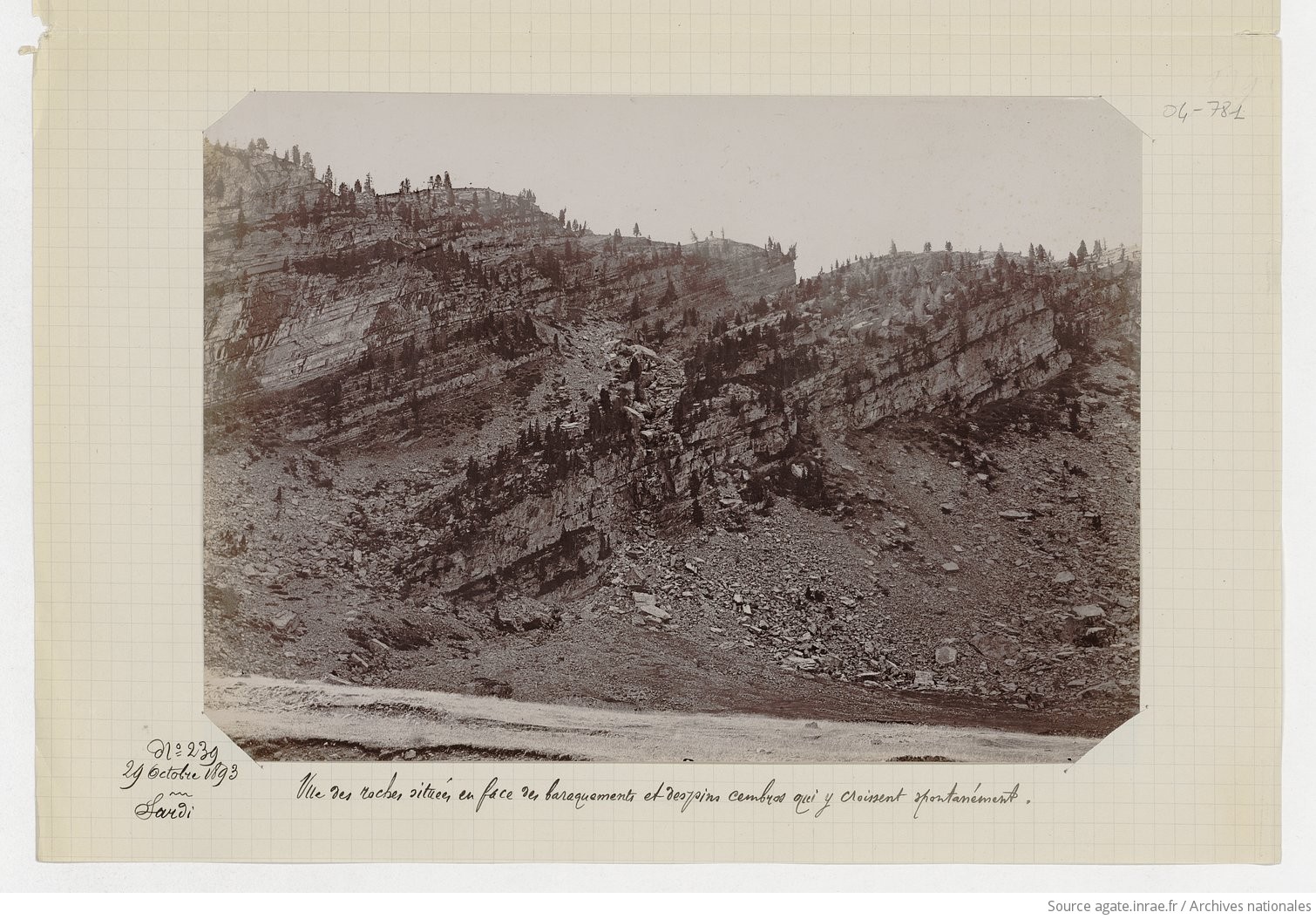
Rocks and Swiss stone pines growing on them, Alpes de Haute Provence, Nicolas Sardi, 1893
The European larch is a flexible, wind-resistant tree. It is often used in conjunction with the Swiss stone pine at high altitudes. It has no fear of snow, as it loses its needles in winter.
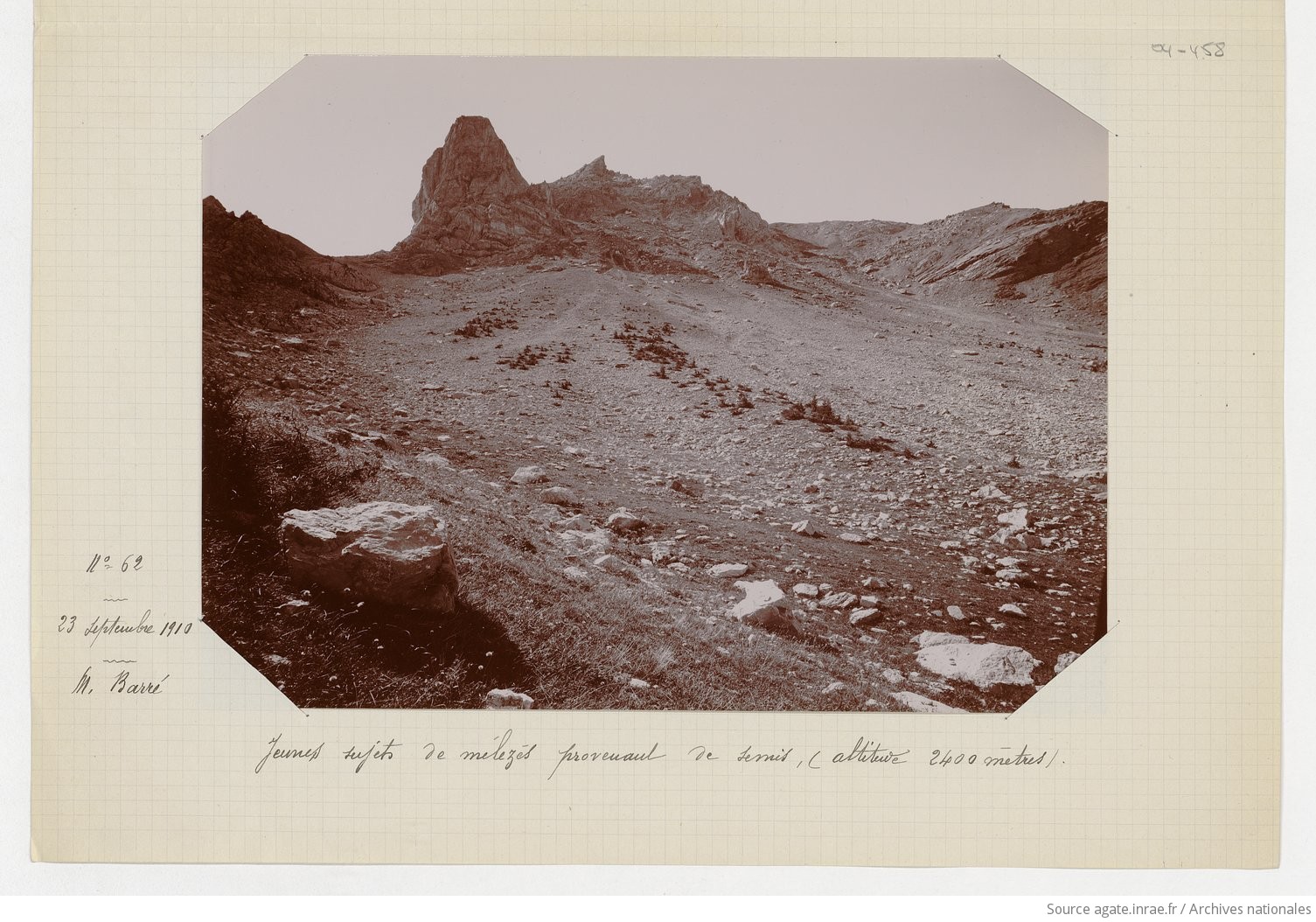
Young larch trees from seedlings (altitude 2,400 metres), Alpes de Haute Provence. Barré. 1910
The hardy Austrian black pine was imported by French foresters starting in the 1830s. It was planted in mid-mountain and limestone areas, among other places. It grows at altitudes of up to 1,400 metres.

Thresholds and linings at Pissevin, plantings of 15-year-old black pines, Alpes de Haute Provence, Cornélis, 1901
Mountain and Scots pine are also used for reforestation at altitude, up to 2,500 metres. These two species hybridise quite easily.
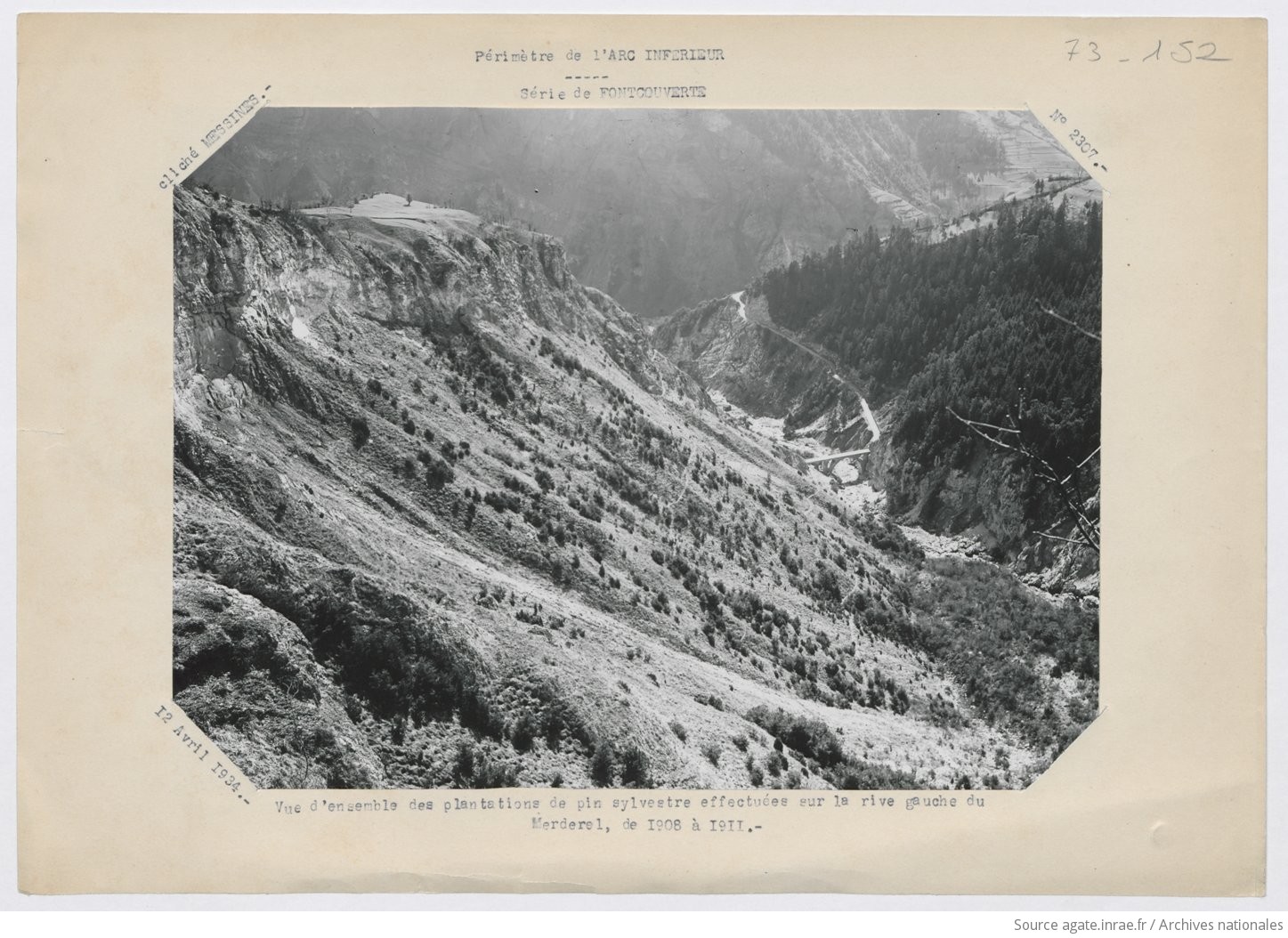
Overview of Scots pine plantings on the left bank of the Merderel, planted between 1908 and 1911, Savoie, 1911, Jean Messines.
Flying nurseries and reforestation operations
For reforestation, seeds come either from the six state-run drying facilities or purchases made abroad from drying facilities and softwood seed shops in Darmstadt, Saxony, Bavaria, Rhenish Palatinate, Württemberg, Austria, Hungary, or any other country.
The RTM services favour domestic production as much as possible. State-run drying facilities were established as early as 1861 in Moselle, Isère, Cantal, the Eastern Pyrenees, and in 1862 in the Hautes-Alpes at Modane and in the Ain department.
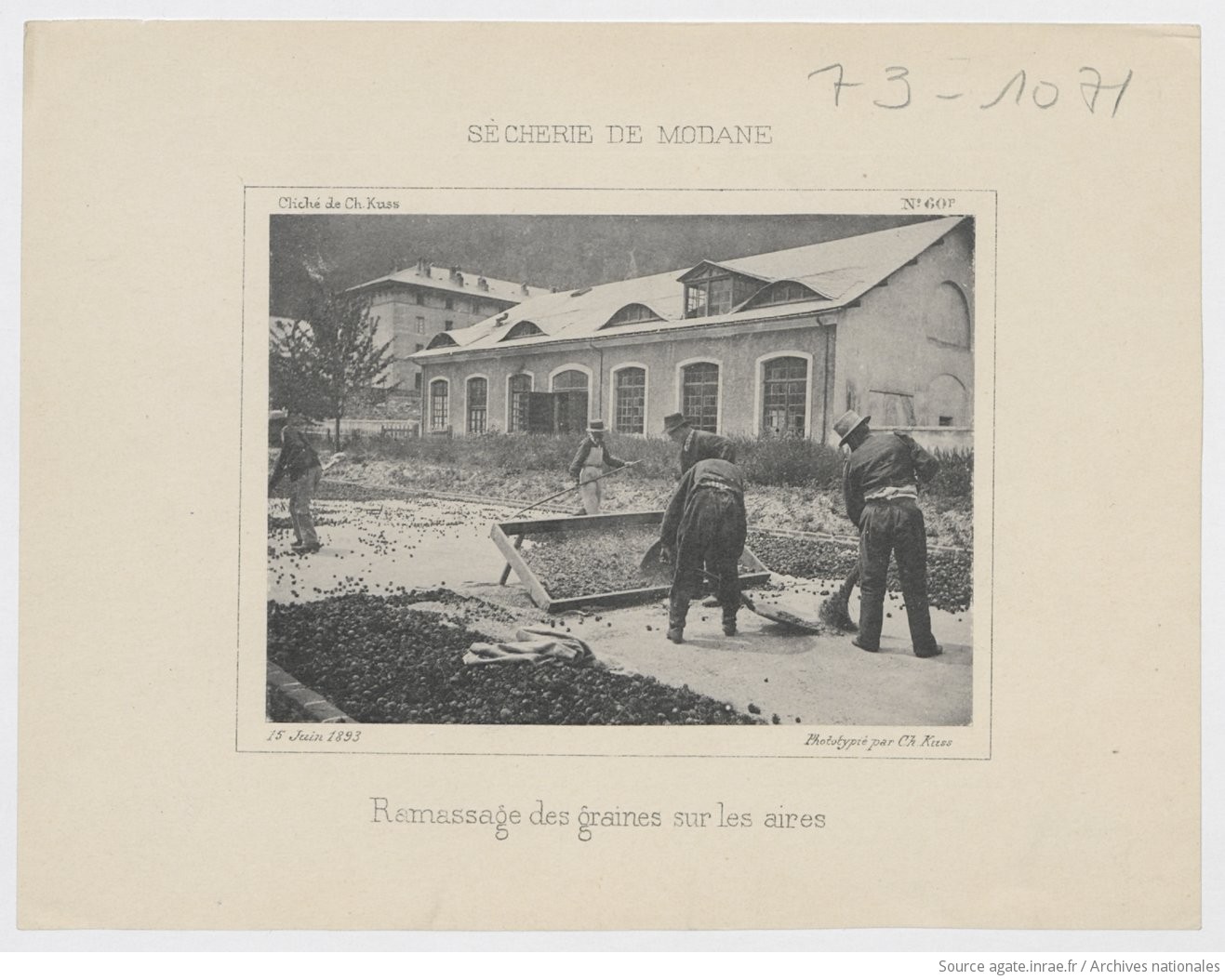
Seed drying facility in Modane. Seed collection in the yard Savoie, 1893. Charles Kuss
Concurrently, cone collection campaigns are organised to reduce the reforestation services' dependence on imported softwood seeds.
Direct sowing, including larch sowing on snow, was abandoned at the beginning of the 20th century due to disappointing results.
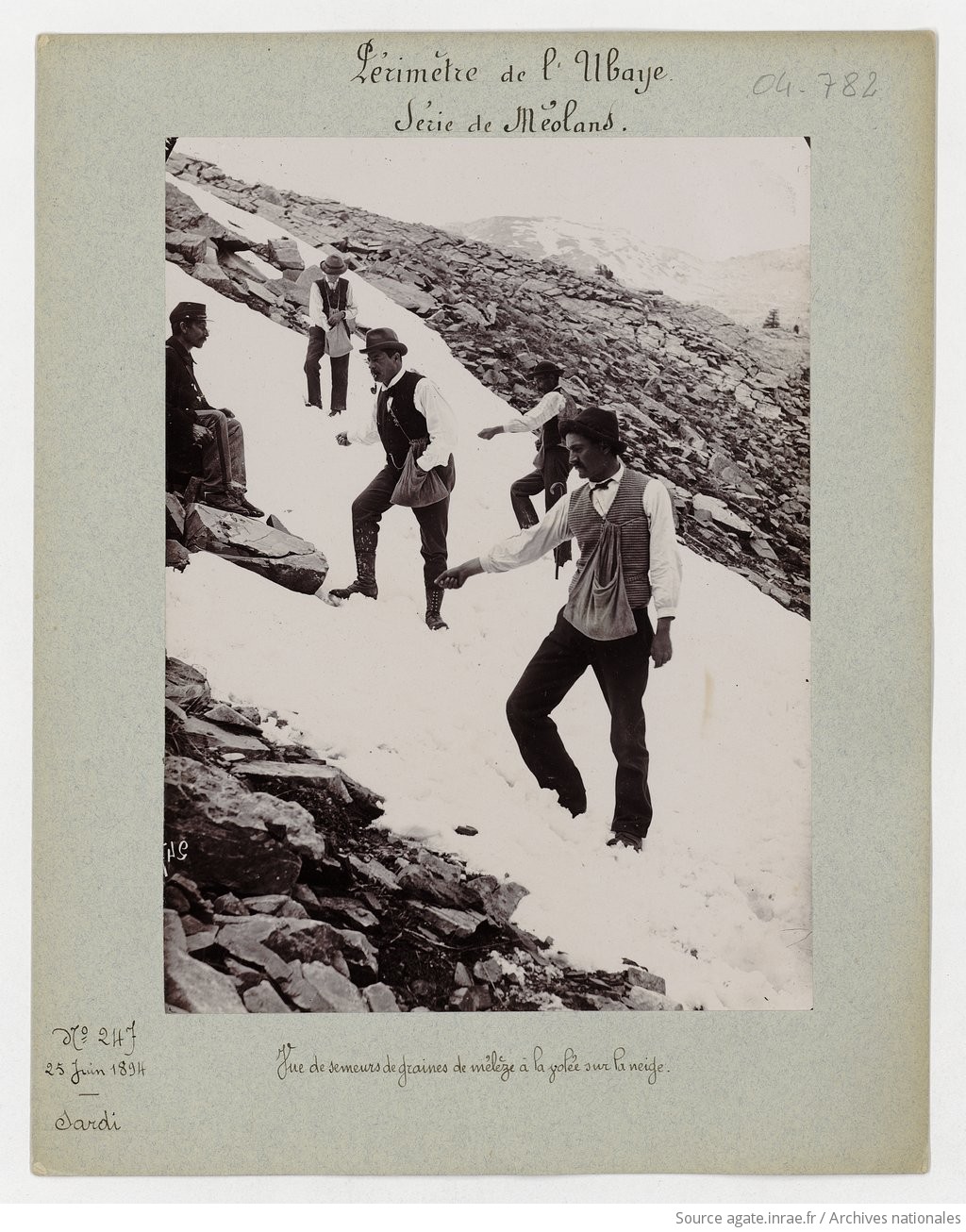
Larch seed sowers broadcasting on snow, Alpes de Haute Provence, Sardi, 1894
The nursery plants used for the projects at the end of the 19th century and the beginning of the 20th century were produced in stationary or flying nurseries on land acquired or leased by the RTM. A forestry officer was stationed nearby to supervise the nurseries. The so-called flying nurseries were set up on the sites to be reforested, and were temporary.
Hundreds of nurseries are set up in the second half of the 19th century, some of them capable of competing with the private sector. By 1875, all these nurseries cover 82 hectares and have produced more than 19 million nursery plants.
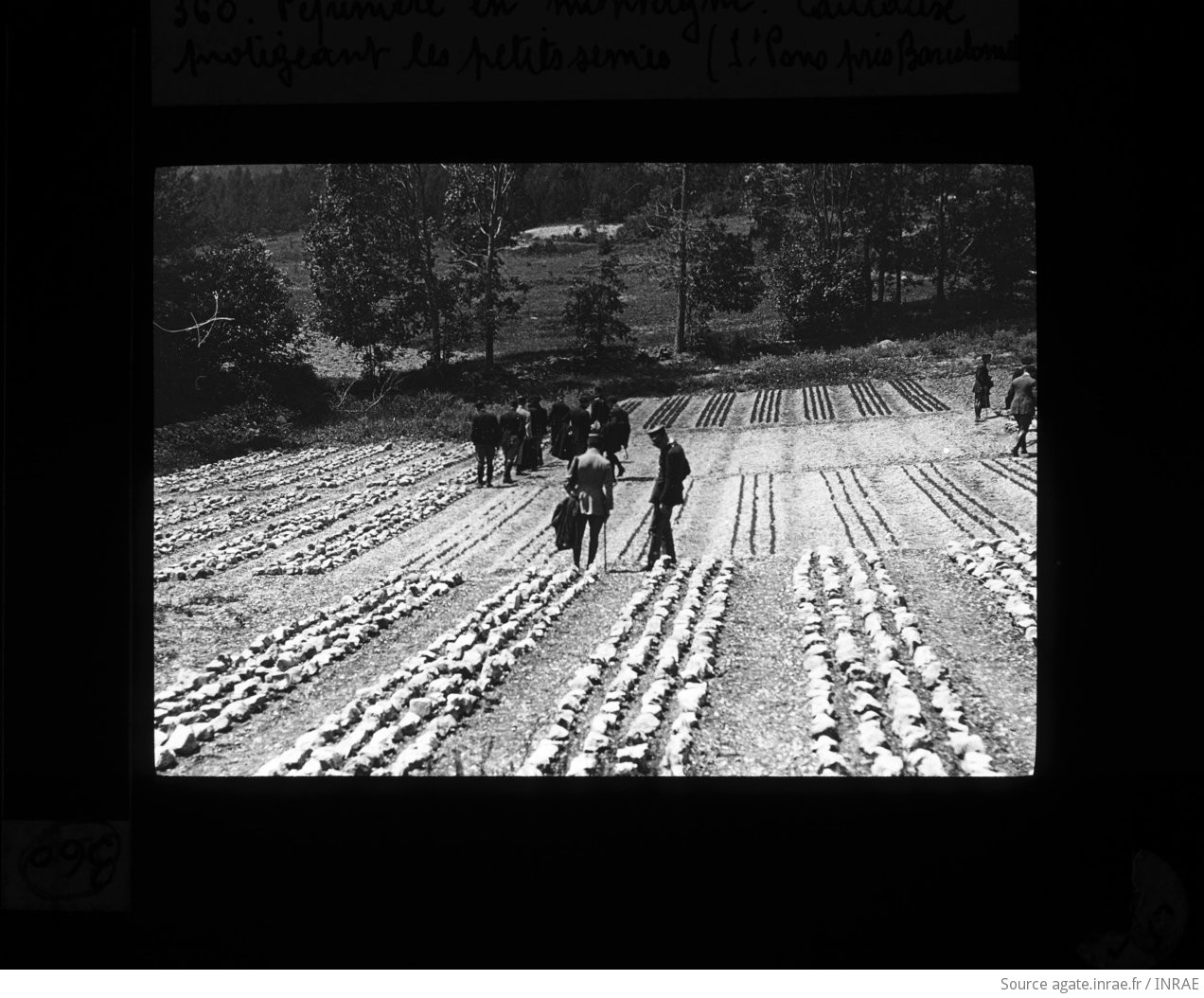
Nursery in the mountains: pebbles protecting small weirs, Saint Pons near Barcelonnette. Saint Pons, Alpes de Haute Provence. s.n. s.d.
The nurseries are organised in horizontal rows. The plot is first broken up, then sowing is carried out on-site. In the 20th century, the use of motorised equipment made this labour-intensive work easier.
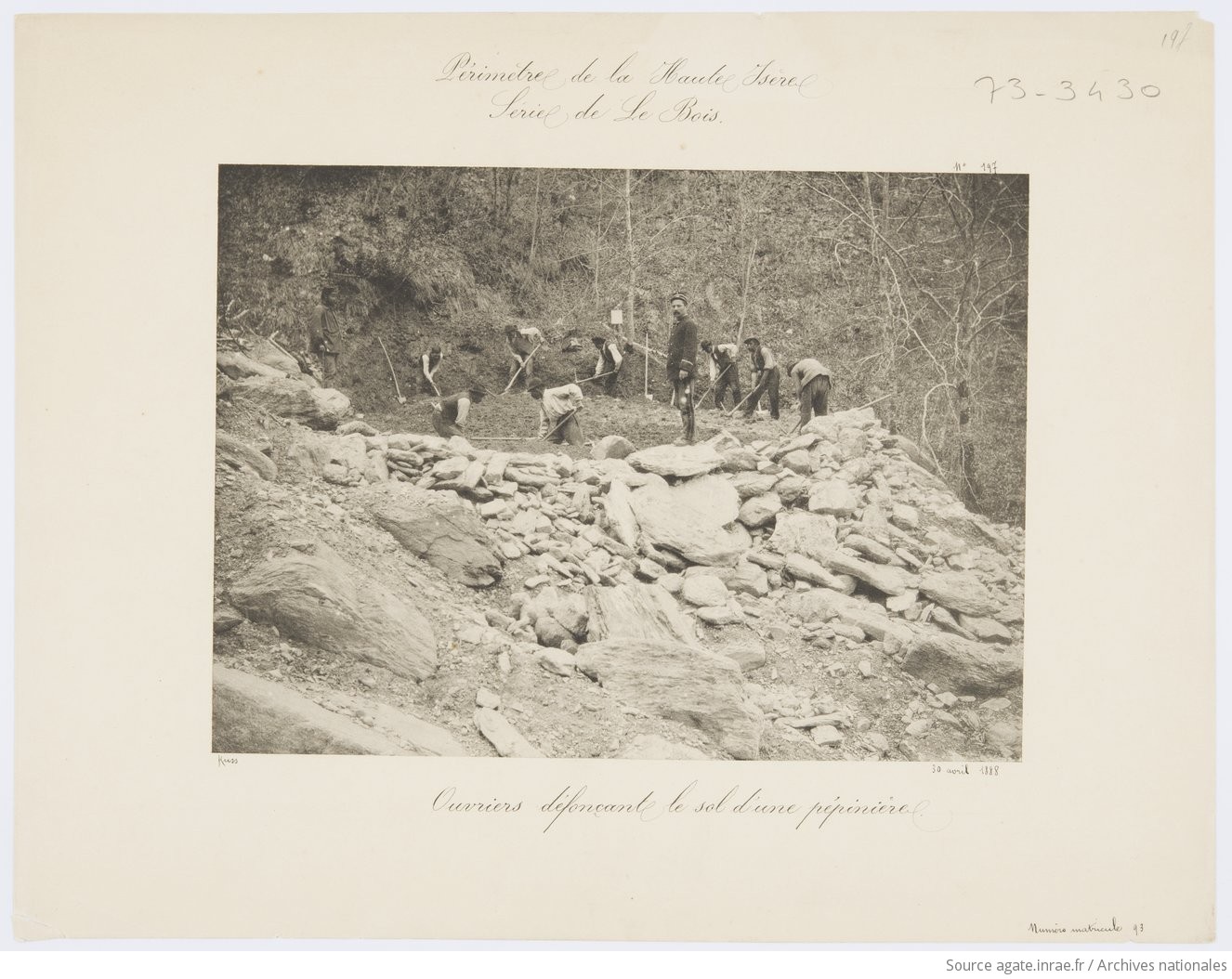
Workers breaking up the ground in a nursery, Le Bois, Savoie, Charles Kuss, 1888
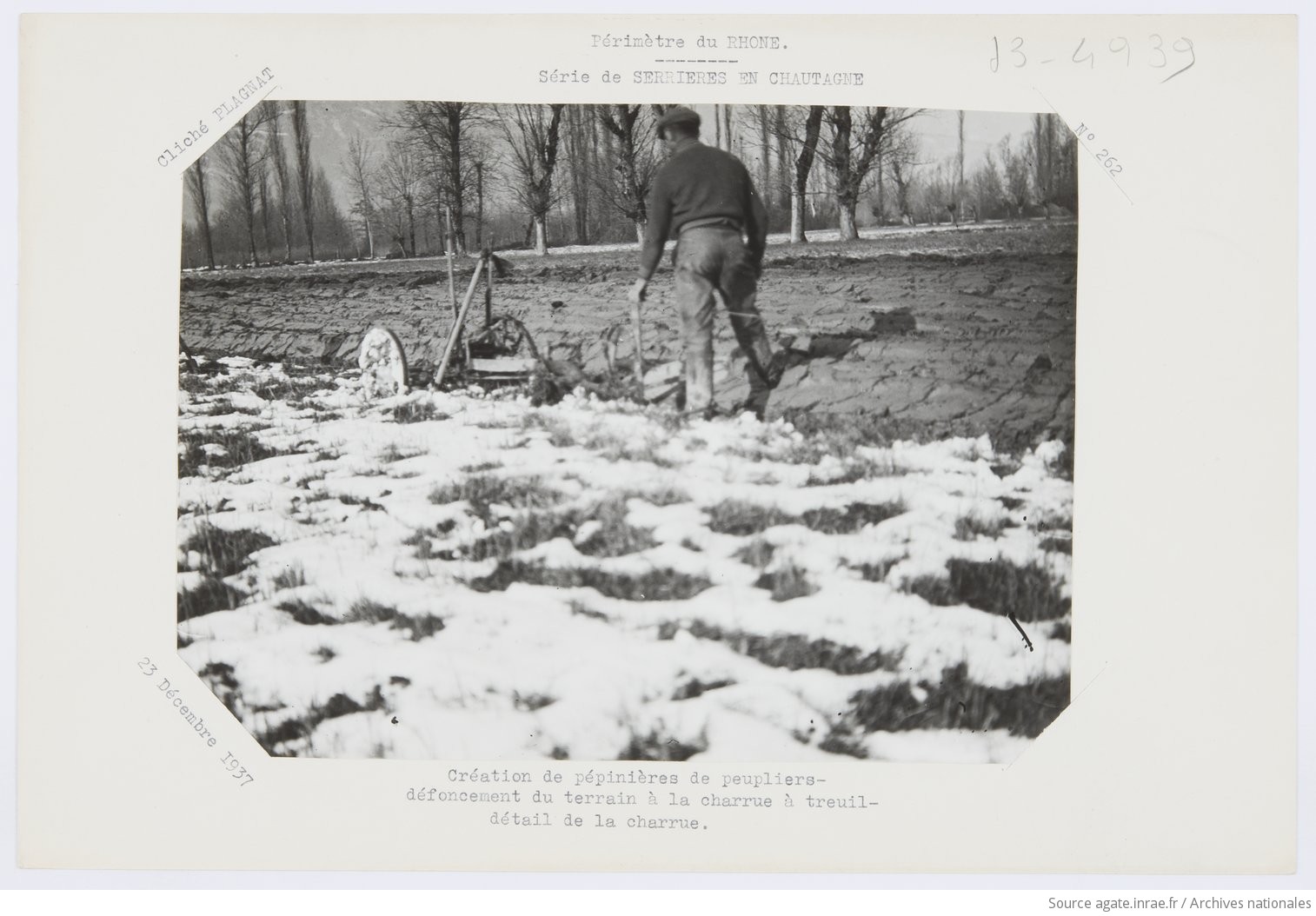
Creating poplar nurseries, breaking up the ground with a winch plough, Serrières en Chautagne, Savoie, Plagnat, 1937
The nursery plants grow to a height of about 20-25 cm, typically after three years. This size is considered optimal for planting. The trunk diameter must also be sufficient not to break under the weight of snow.
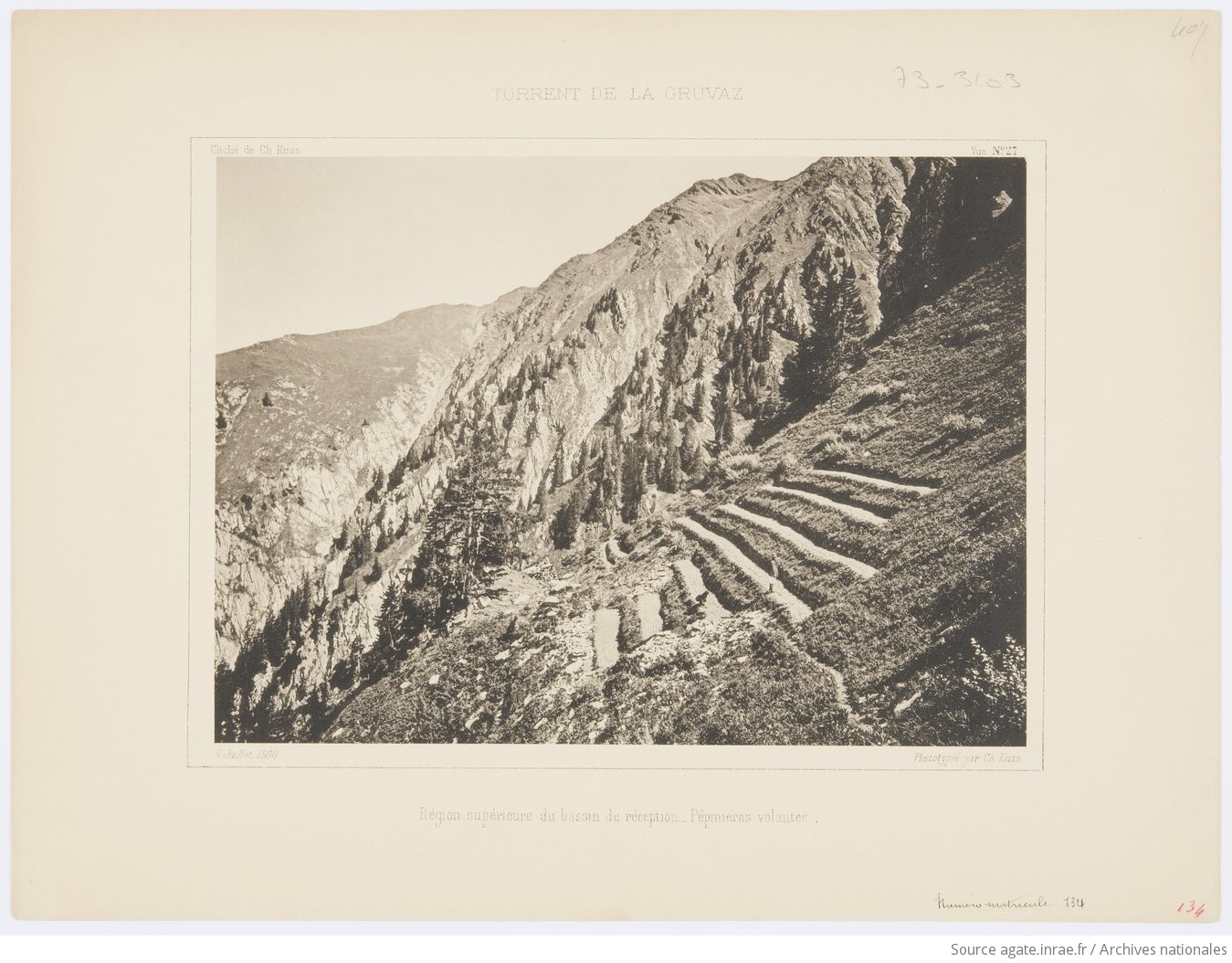
Gruvaz torrent, flying nurseries, Savoie. Charles Kuss, 1890
Thousands of local residents from the reforestation areas were hired by the RTM services to put the nursery plants into the ground.
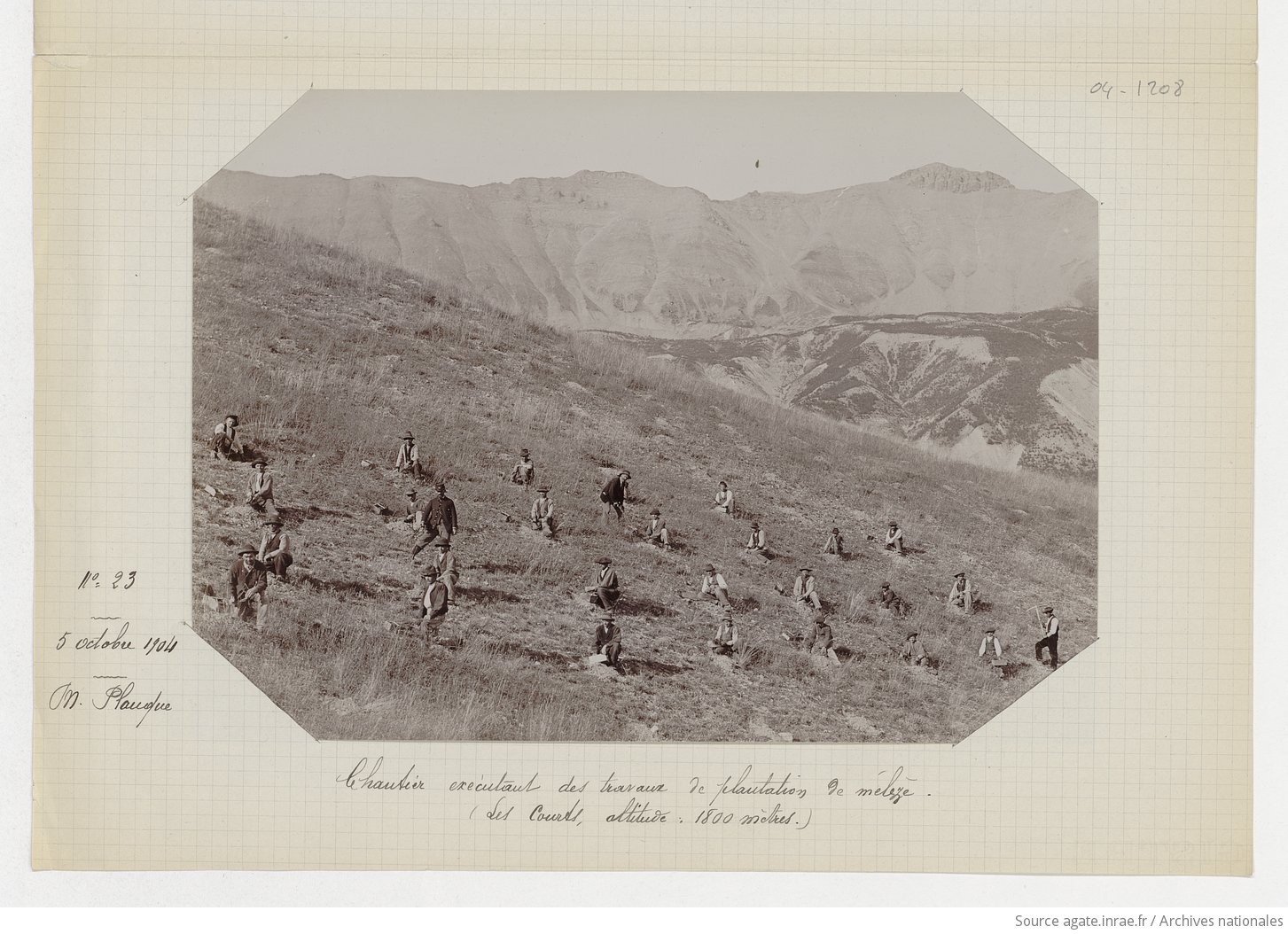
Workers on a larch planting site, Les Cours, Altitude 1800 mètres, Alpes de Haute Provence, Planque, 1904
And today at INRAE
In the 1970s, Cemagref embarks with the help of INRA and the ONF (Office National des Forêts, the French National Forest Office) on trials to introduce “exotic” species for protective reforestation in avalanche chutes in the Alps and Pyrenees. A summary of this work was published in 2000 by Cemagref.
The Gen4X network (Forest Genetics Network for Research and Experimentation) enables INRAE researchers to compare species or several genetic units of the same species (geographical origins, families, clones) under varied but controlled environmental conditions in what are known as “common garden” devices.
Since the first plantings in the 1960s, over a thousand tests have been carried out on more than 2,000 hectares, representing around 2.5 million trees planted. Around fifteen species are currently being closely monitored: oak, poplar, sweet cherry, beech and ash for the hardwoods, and maritime pine, Douglas fir, larch, Scots pine, fir, Stone pine, cypress and cedar for the softwoods.
Bibliography
Clavé, J. (1881). Le reboisement des Alpes (The reforestation of the alps). Revue Des Deux Mondes. https://www.revuedesdeuxmondes.fr/article-revue/fevrier-1881-3/
Mullenbach, P. (2000). Reboisements d’altitude (High altitude reforestation). Cemagref Éditions. https://agate.inrae.fr/ark:/12148/bpt6k1098284h
Text written by Pascale Hénaut (INRAE-DipSO)
How to cite: Focus Agate: Reforestation at altitude: from species selection to “flying nurseries”, Pascale Hénaut (INRAE-DipSO), april 2025. https://agate.inrae.fr/agate/en/content/highlights
Illustrations
The banner was made from a Charles Kuss 's photography: Workers breaking up the ground in a nursery, Grollaz torrent, 1893

The thumbnail was made from a Billecard's photography: La Bâtie Neuve, he Swiss stone pine flying nursery, Durance-Luye perimeter, 1899
